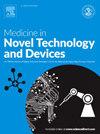针对中风患者的 3D 打印肩肘锻炼装置--一项试点研究
Q3 Medicine
引用次数: 0
摘要
上肢运动是日常生活中必不可少的,中风后导致的手部瘫痪影响了患者的正常生活。要恢复手部的活动能力和运动功能,我们必须进行反复的锻炼。如今,为了帮助中风后遗症患者锻炼身体,更快地从瘫痪中恢复过来,康复设备是必不可少的。拟议的研究开发了一种用于肘部和肩部运动的 3D 打印便携式康复装置。该装置可帮助手部受损的患者重复进行肘部屈伸和肩部内/外旋运动。20 名中风后患者(每组 10 人)被随机分配到传统训练组或康复设备训练组。这项研究比较了两组患者在八周训练前后的效果。治疗结束后,患者的表现将通过标准临床测试进行评估,如福格-迈耶评估(FMA)以及肘部和肩部的主动活动范围(AROM)。RDT(康复设备训练)组的结果高于TT(传统训练)组,P值(p <0.05)显示出显著的改善。所提议的设备是一种简单、低成本、便携式的结构,可改善肩部和肘部的肌肉力量和活动能力。本文章由计算机程序翻译,如有差异,请以英文原文为准。
3D-printed shoulder and elbow exercise device for stroke patients- A pilot study
Upper limb movements are essential in everyday life; hand paralysis caused by post-stroke affects the regular lives of patients. To regain hand mobility and motor function, we must perform repetitive exercises. Nowadays, rehabilitation devices are essential to help post-stroke victims exercise and recover from paralysis more quickly. The proposed research developed a 3D-printed portable rehabilitative device for elbow and shoulder movements. This device assists patients with hand impairments in performing repetitive elbow flexion and internal/external rotation of the shoulder. Twenty post-stroke patients (each group of 10) were randomly assigned to the traditional training group or rehabilitation device training group. This study compared the outcomes of the two groups before and after eight weeks of training. Following the therapy, the patient's performance was evaluated using standard clinical tests such as the Fugl-Meyer Assessment (FMA) and Active Range of Motion (AROM) of the elbow and shoulder. The results of the RDT (Rehabilitation Device Training) group were greater than those of the TT (Traditional Training) group, and the p values (p < 0.05) show a significant improvement. The proposed device is a simple, low-cost, portable structure that improves muscular strength and mobility in the shoulder and elbow.
求助全文
通过发布文献求助,成功后即可免费获取论文全文。
去求助
来源期刊

Medicine in Novel Technology and Devices
Medicine-Medicine (miscellaneous)
CiteScore
3.00
自引率
0.00%
发文量
74
审稿时长
64 days
 求助内容:
求助内容: 应助结果提醒方式:
应助结果提醒方式:


